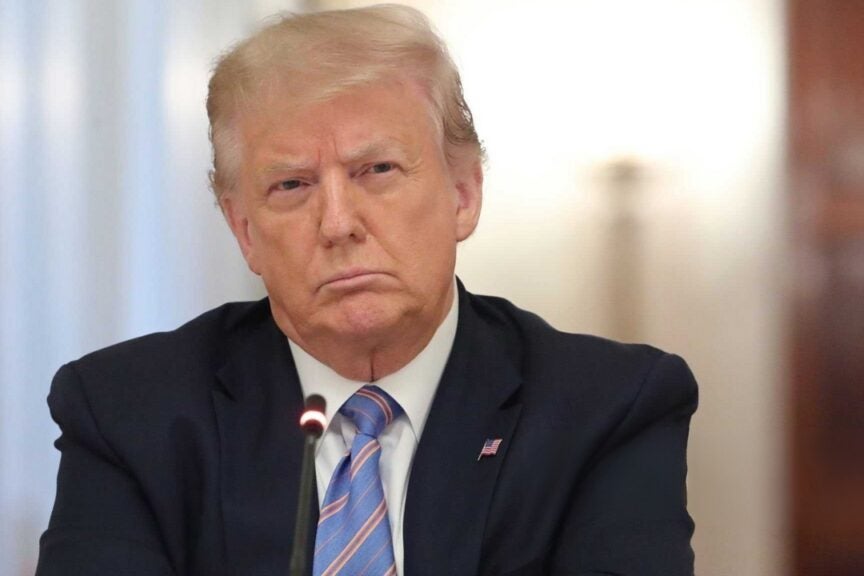Navigating the Crossroads: Trump’s CHIPS Act Overhaul Amidst Tech Tensions
As the global tech landscape becomes increasingly fraught with challenges, former President Donald Trump is poised to propose significant revisions to the U.S. CHIPS Act, a pivotal piece of legislation aimed at bolstering the semiconductor industry. This potential overhaul comes at a time when tensions between the U.S. and countries like China are escalating, raising questions about the future of semiconductor policy in America. Industry leaders are expressing concern about how these changes might align (or conflict) with the current strategies laid out by the Biden administration.
The Context of the CHIPS Act
Enacted in 2021, the CHIPS Act (Creating Helpful Incentives to Produce Semiconductors for America) was designed to enhance domestic semiconductor manufacturing capabilities. This legislation arose in response to a global semiconductor shortage, which had profound implications for various sectors, including automotive, electronics, and even healthcare. The act allocated $52 billion to stimulate research and development, incentivize local production, and ensure the U.S. remains competitive in an industry dominated by foreign players.
However, as the semiconductor sector continues to evolve, the need for agile policy-making has never been more critical. Trump’s impending revisions to the CHIPS Act aim to address emerging challenges and opportunities while navigating the complex geopolitical landscape.
Trump’s Proposed Revisions: Key Features
While the specifics of Trump’s revisions are still emerging, several key themes are anticipated based on his administration’s previous policies and public statements:
- Strengthening Domestic Manufacturing: One of the primary objectives is expected to be an increased emphasis on domestic semiconductor manufacturing. This includes providing additional incentives for companies to establish or expand facilities within the U.S.
- National Security Considerations: Given the rising tensions with China, Trump is likely to underscore the importance of reducing reliance on foreign semiconductor supply chains, particularly from adversarial nations.
- Tax Incentives: The proposed revisions may include expanded tax credits and subsidies for semiconductor research and development, aimed at fostering innovation within the industry.
- Regulatory Streamlining: Trump’s administration might seek to streamline regulations that currently hinder the rapid advancement of semiconductor technologies.
These changes could potentially reshape the semiconductor landscape in the U.S., but they also raise questions about the alignment with the current administration’s strategies.
Concerns from Industry Leaders
As Trump prepares to unveil these revisions, industry leaders are voicing their concerns regarding the potential implications. Many argue that while a focus on domestic manufacturing is essential, the approach should be balanced with the need for international collaboration.
Some key concerns include:
- Potential for Trade Conflicts: Increased tariffs or restrictions on foreign semiconductor imports could lead to retaliatory measures from other countries, exacerbating existing trade tensions.
- Innovation vs. Protectionism: There’s a fear that an overly protectionist stance might stifle innovation and collaboration that has historically driven advancements in technology.
- Alignment with Existing Policies: Current policies under the Biden administration emphasize partnerships with allies and a collaborative approach to global semiconductor challenges. Trump’s revisions could create a disjointed strategy if not carefully aligned.
The Current Administration’s Position
Under President Biden, the focus has been on strengthening alliances and ensuring that the U.S. semiconductor industry can compete on a global scale. This includes working with countries like Japan and South Korea to create a more resilient supply chain and investing in workforce development to fill the skills gap in the semiconductor workforce.
The Biden administration’s CHIPS for America initiative has also emphasized public-private partnerships, encouraging collaboration between government and industry to drive the semiconductor sector forward. This contrasts with Trump’s more unilateral approach, which might prioritize national interests over collaborative global strategies.
Potential Outcomes of the Revisions
The potential outcomes of Trump’s CHIPS Act overhaul could vary widely based on how these revisions are implemented and received. Here are several possible scenarios:
- Increased Domestic Capacity: If successful, the revisions could lead to a surge in domestic semiconductor manufacturing capacity, reducing reliance on foreign sources and enhancing national security.
- Innovation Stagnation: Conversely, if the revisions lead to excessive protectionism, the U.S. could face stagnation in innovation, as companies may become less inclined to collaborate internationally.
- Geopolitical Ramifications: Heightened tensions with countries like China could result, with potential ramifications for global supply chains and international relations.
The Importance of a Balanced Approach
As the semiconductor industry stands at a critical juncture, a balanced approach that considers both domestic needs and global collaboration is essential. The successful navigation of these crossroads will require careful deliberation and cooperation among policymakers, industry leaders, and stakeholders.
Ultimately, the revisions to the CHIPS Act could serve as a litmus test for the U.S. approach to technology policy in an increasingly complex global environment. Striking the right balance between fostering domestic growth and maintaining international partnerships will be crucial for safeguarding the future of the semiconductor industry.
Conclusion
In navigating the crossroads of Trump’s CHIPS Act overhaul amidst rising tech tensions, the stakes have never been higher. As industry leaders and policymakers grapple with these changes, the future of semiconductor policy will likely shape not only the tech landscape but also broader economic and geopolitical dynamics. The emphasis must remain on collaboration, innovation, and a commitment to a resilient and competitive semiconductor industry in the face of evolving challenges.
See more Future Tech Daily

